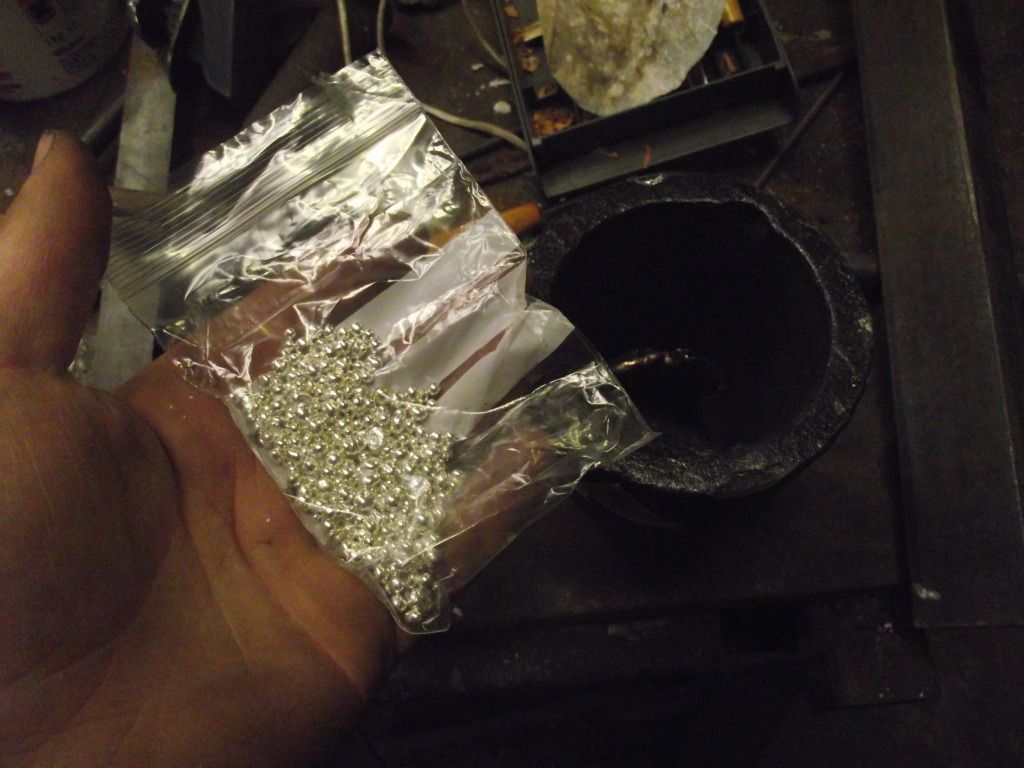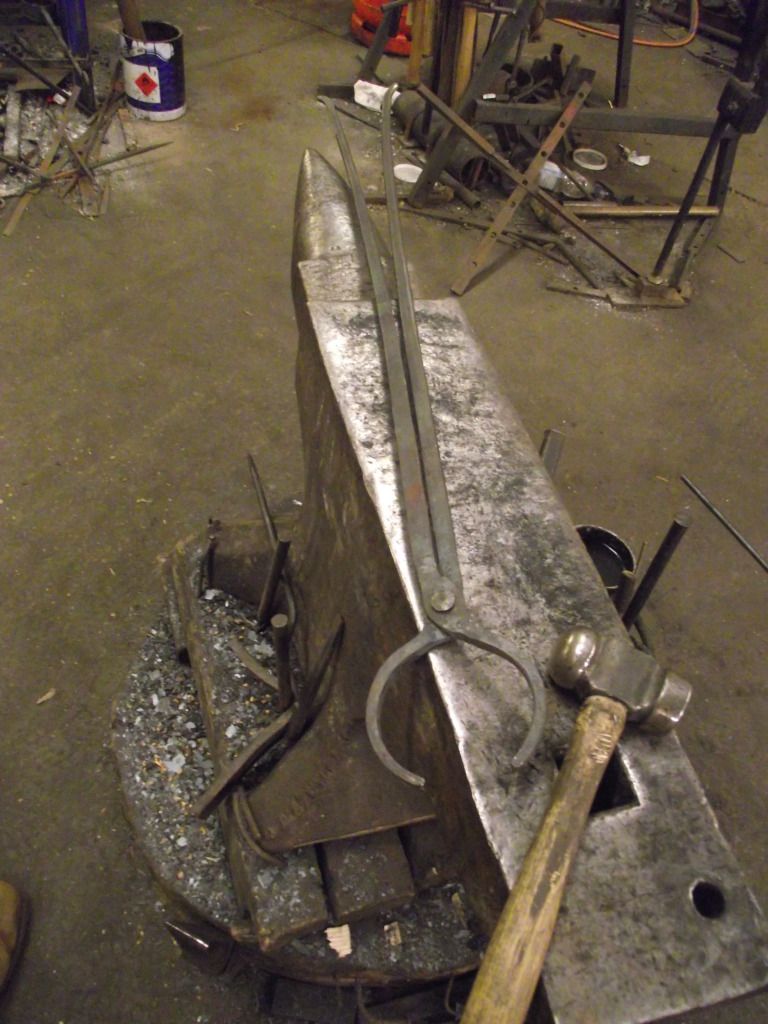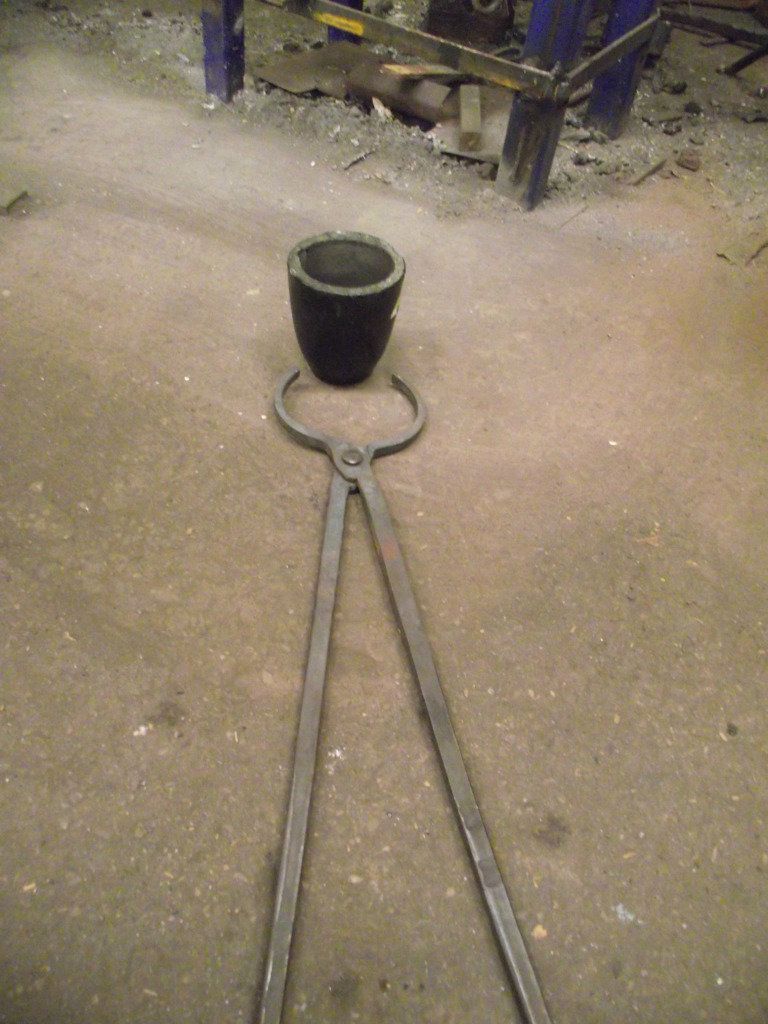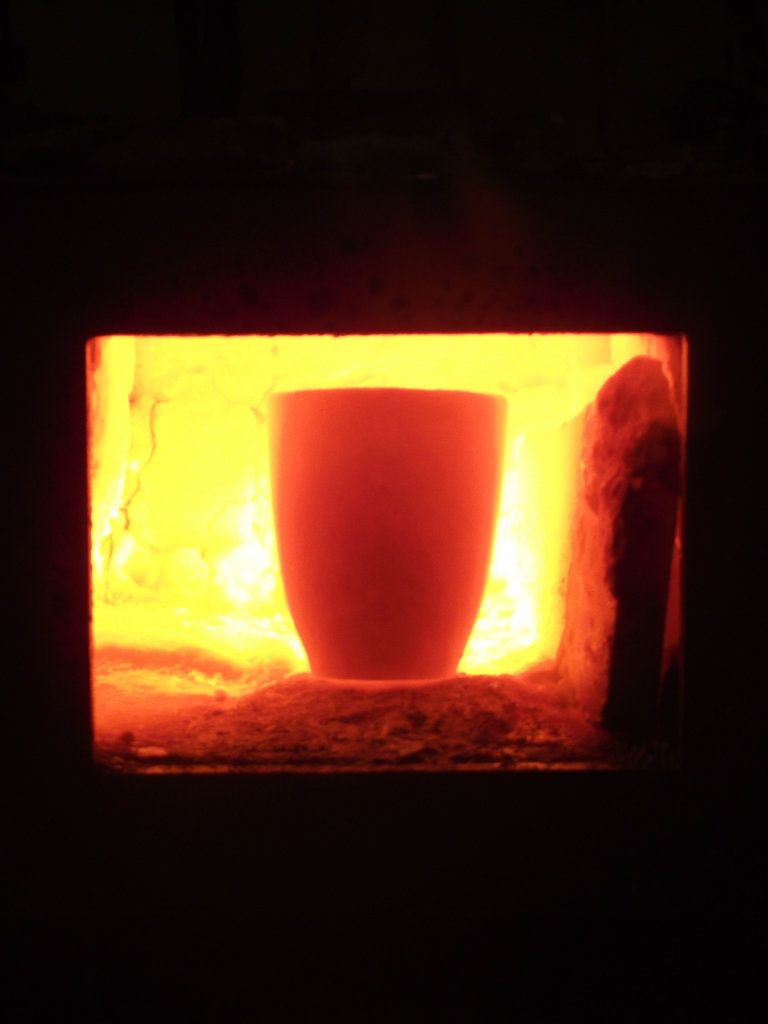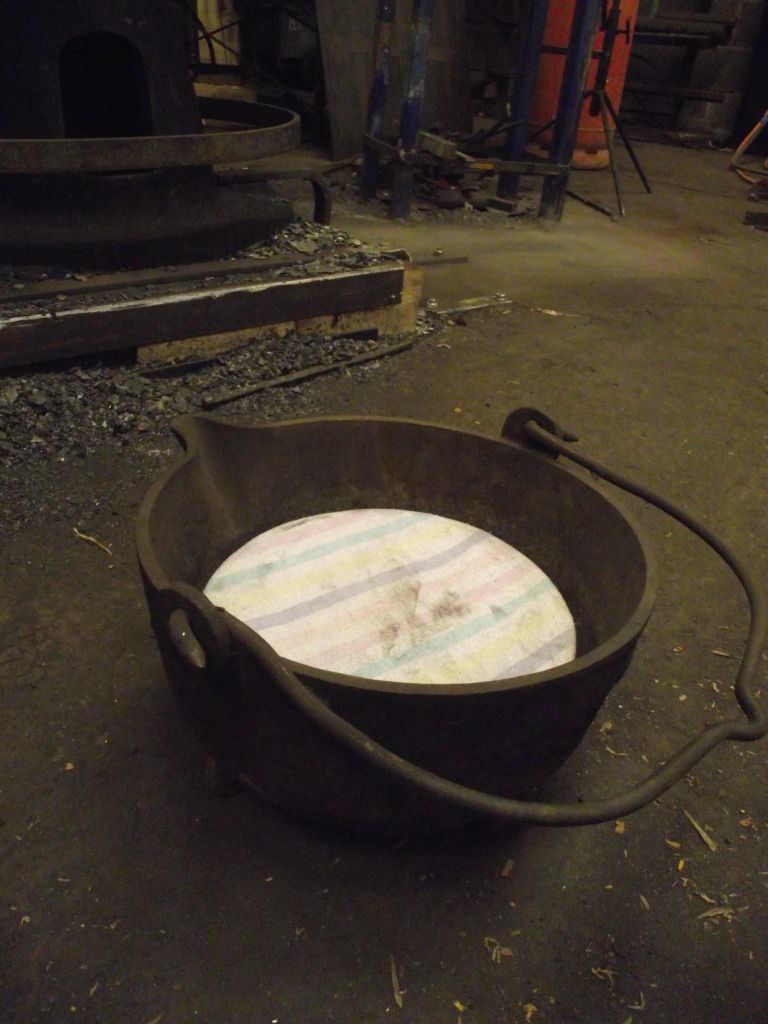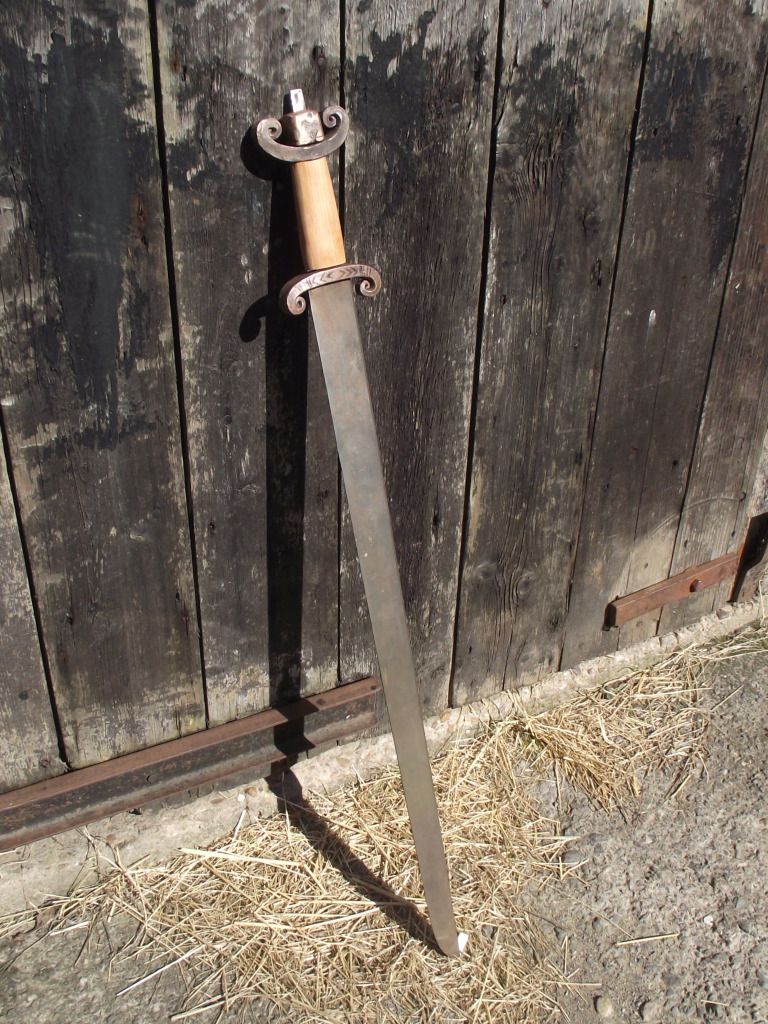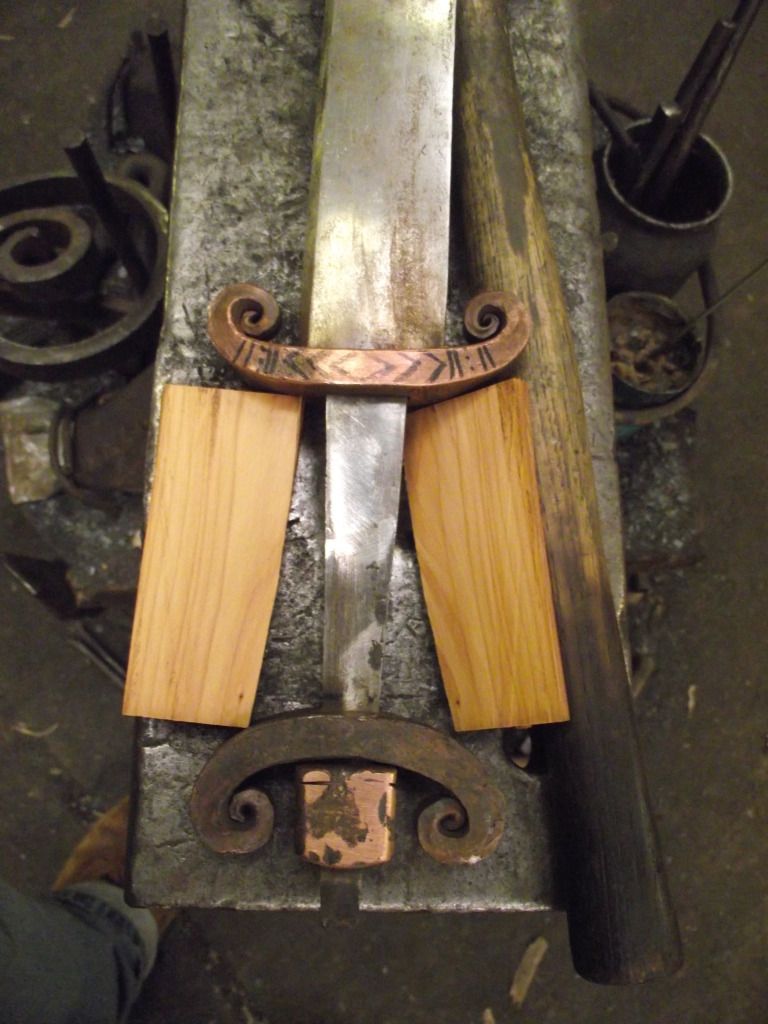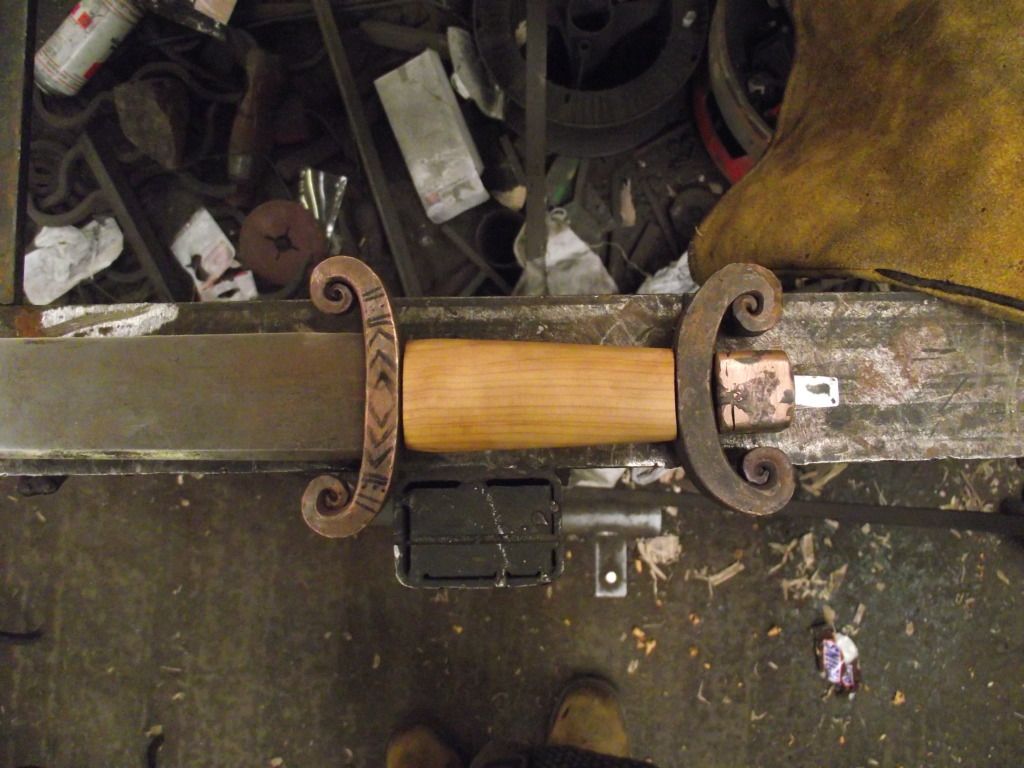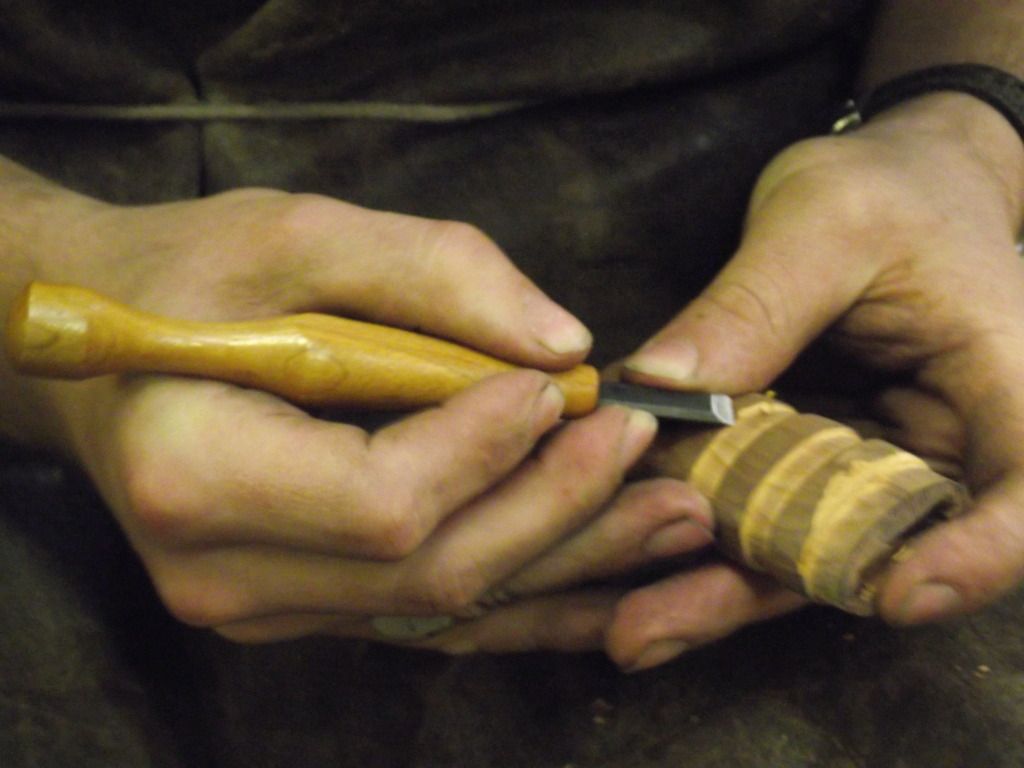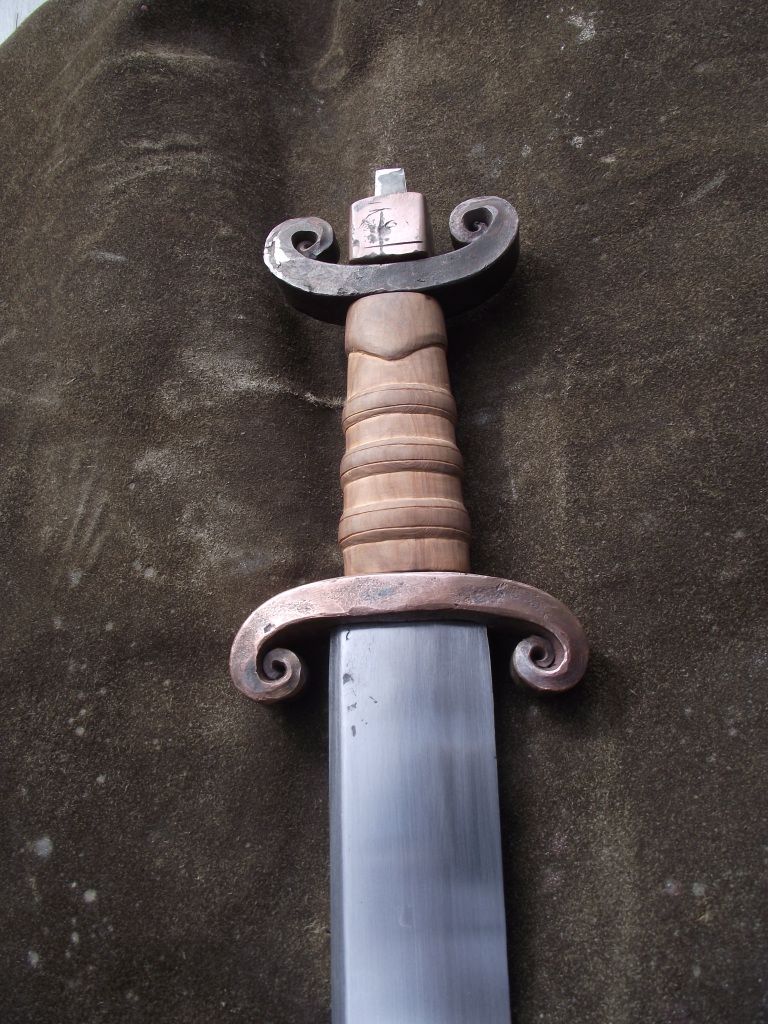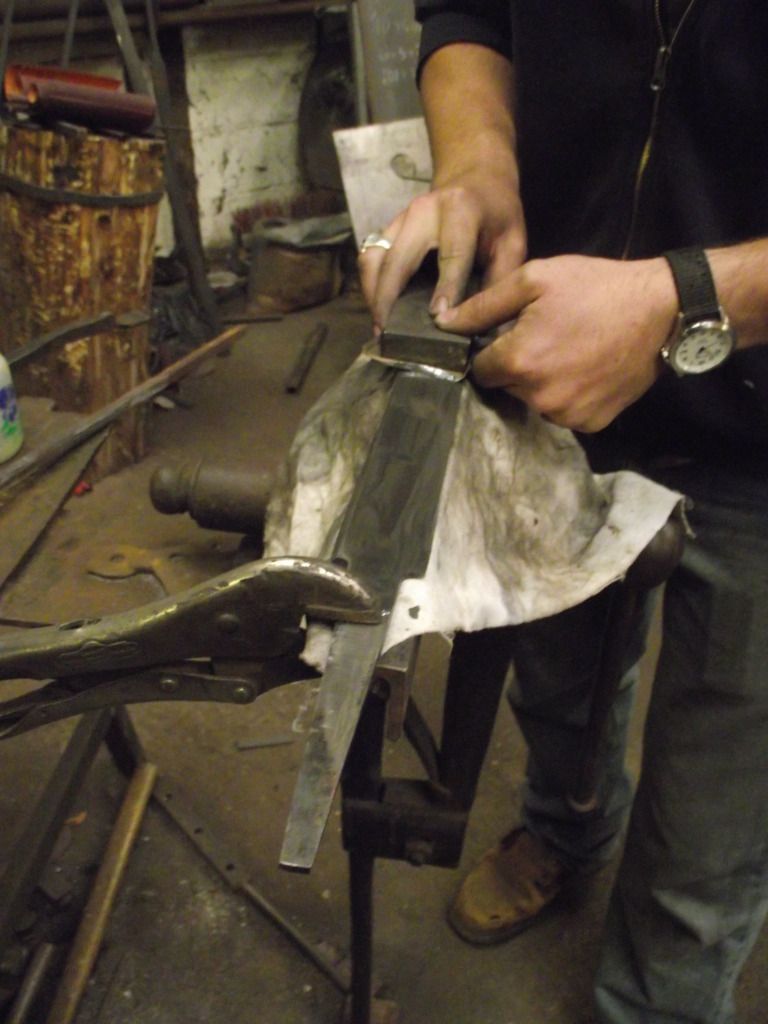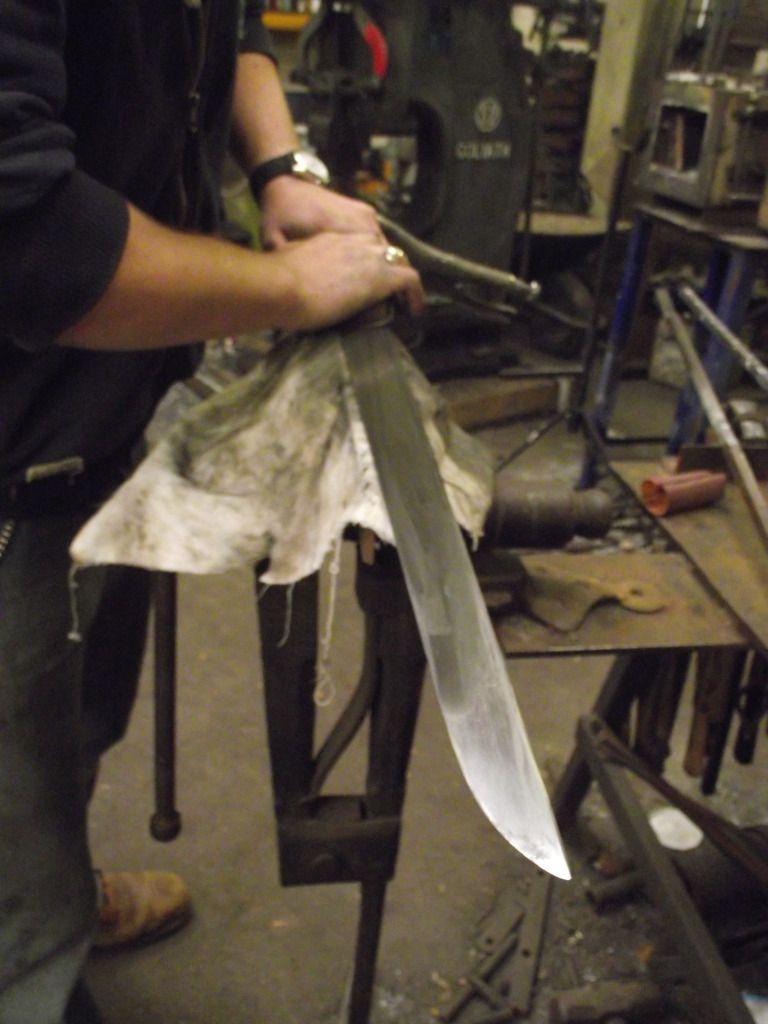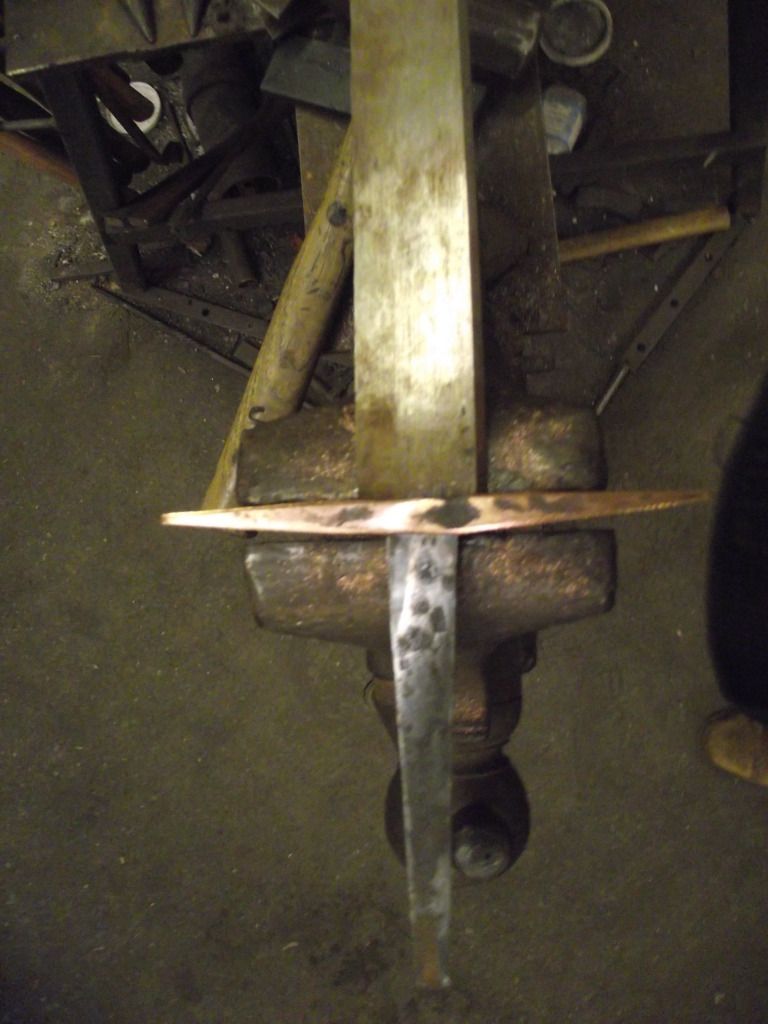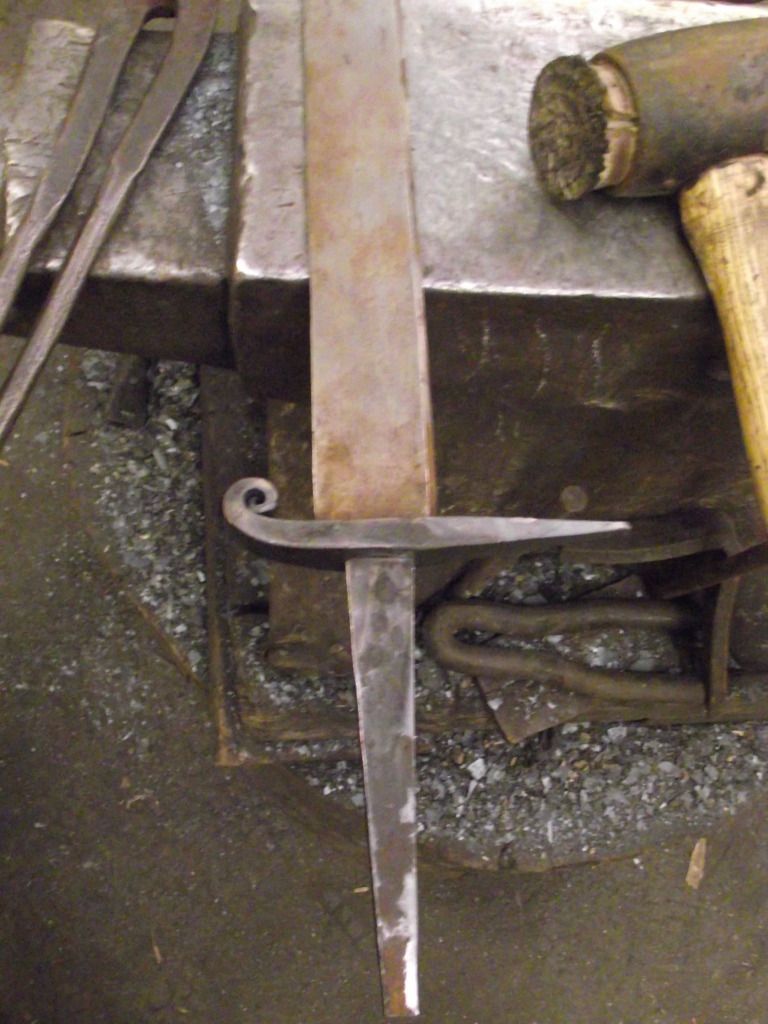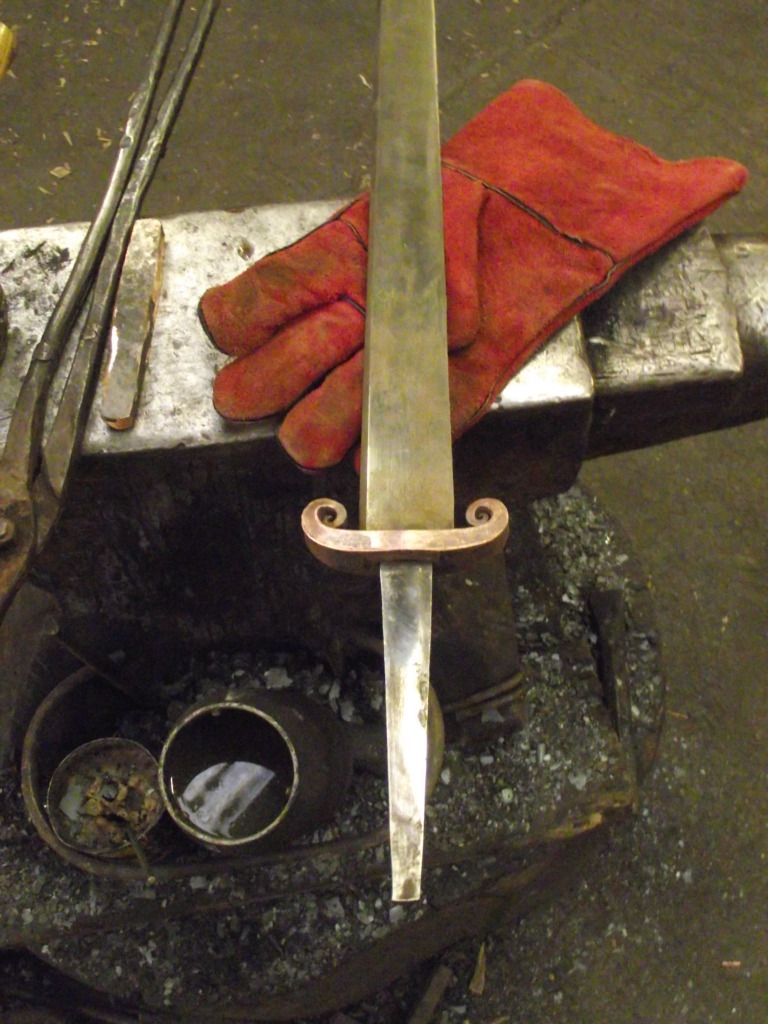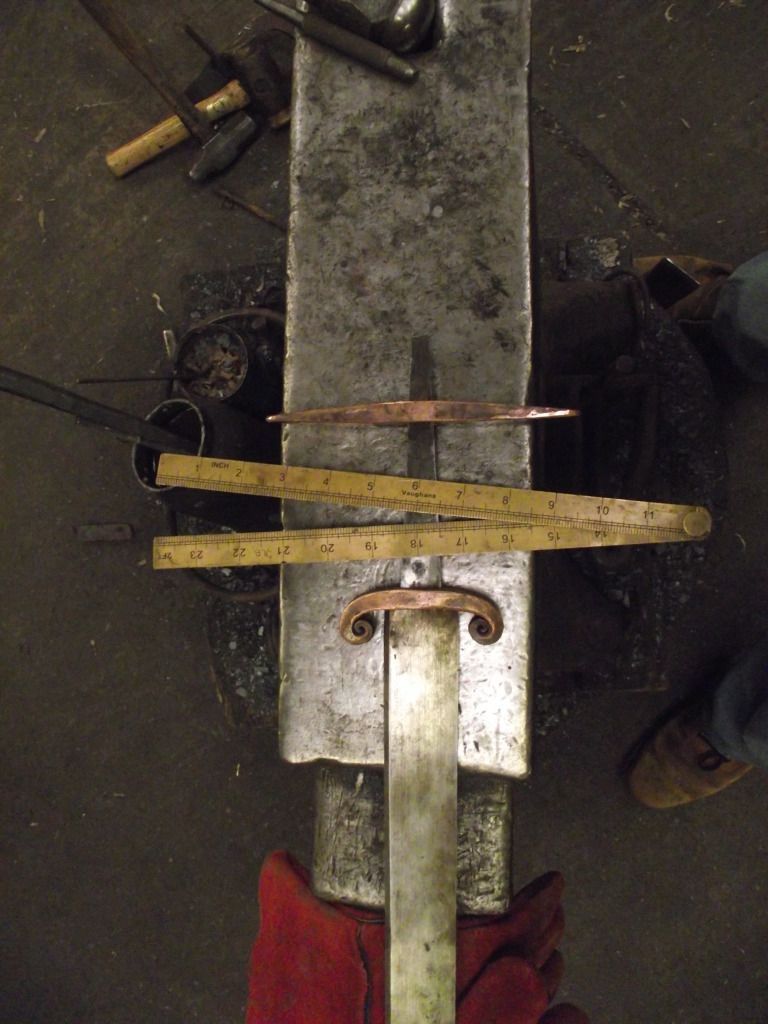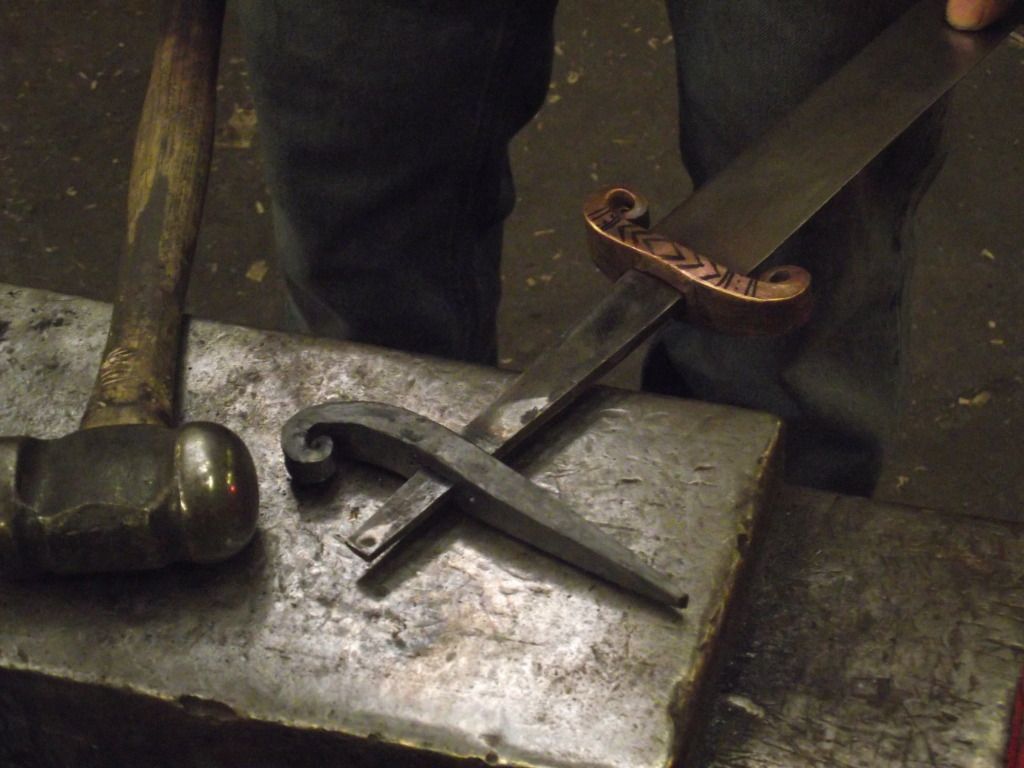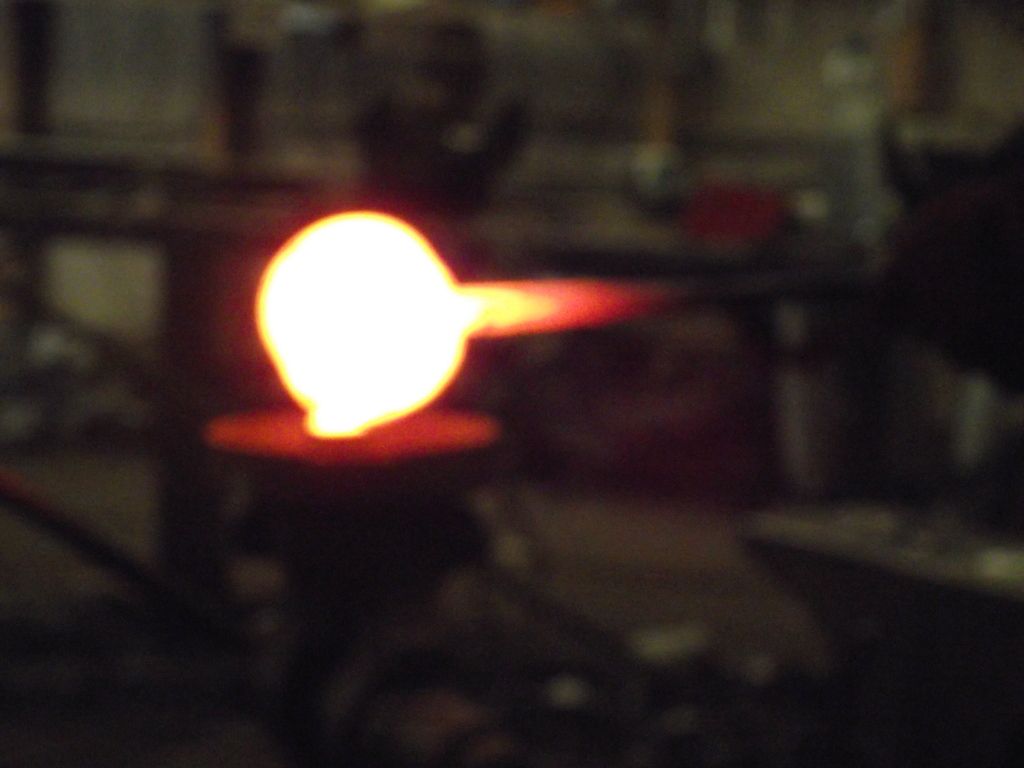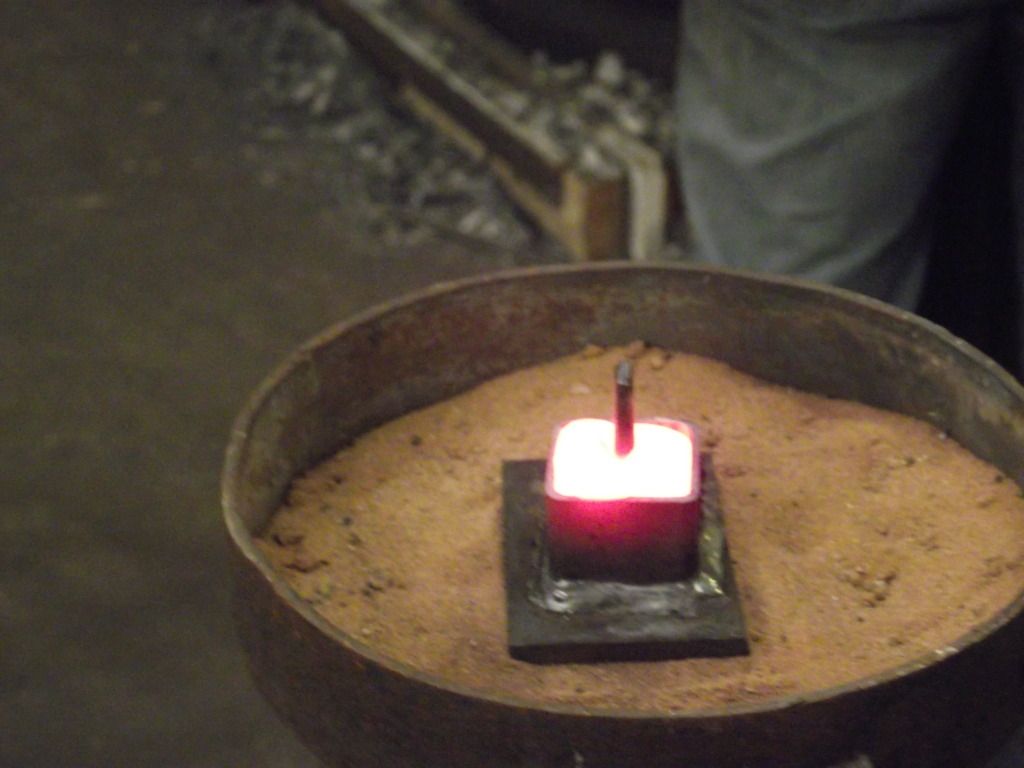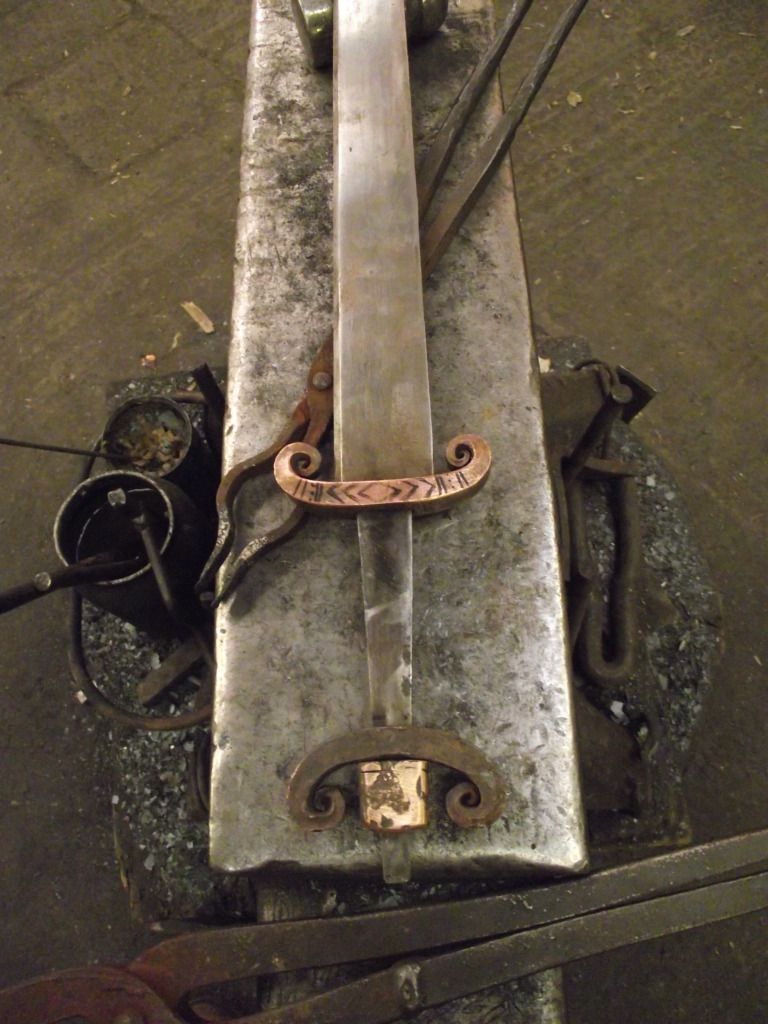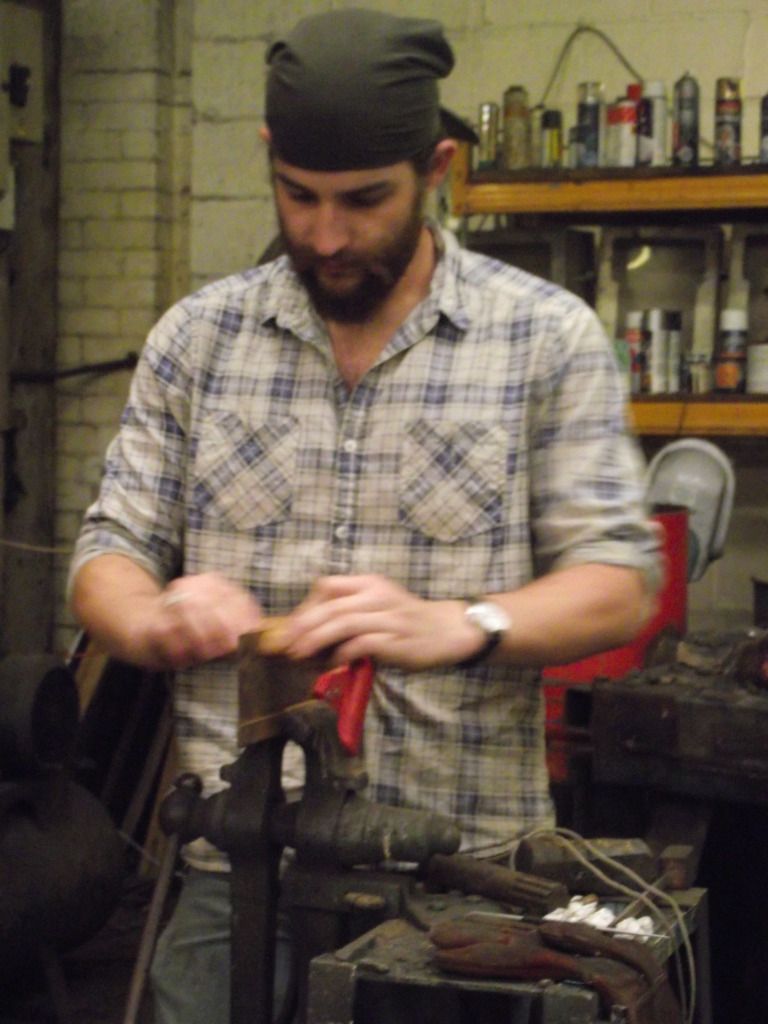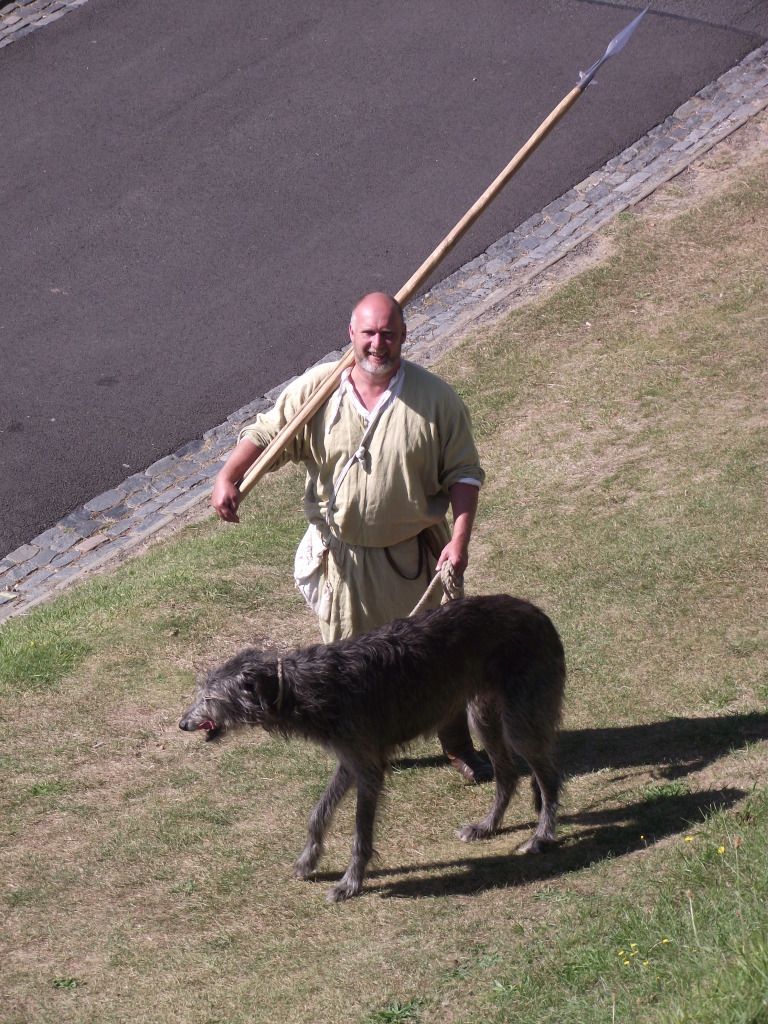As part of a jewellery commission, I have produced today my
own alloy from which I will produce a large cuff with an engraved botanical
motif.
The alloy I have made is a Japanese type called “Shibuichi”.
It is made of copper and silver, in this instance 300 grams of copper and 100
grams of silver.
These materials are
heated together in a large crucible inside my furnace. In order to properly
hold the crucible, I forged a specific set of long tongs. Making tongs is a
pleasure and it is always worth investing the time to produce a decent set
rather than rush.
The tongs were carefully formed to grip the whole circumference
of the crucible, rather than to apply pressure on any one particular point.
Once the furnace was brought up to temperature the crucible
with the casting grains were placed inside and allowed to melt together.
The method employed here is to cast the liquid Shibuichi into
recently boiling water, with a cloth suspended in it. The theory is fascinating as it relies on the
understanding that you are not attempting to quench the liquid metal in hot
water, but rather super-heated gas. The ingot of metal will float on top of
this gas jacket on top of the cloth and thus not burn through despite being
many hundreds of degrees in temperature.
Apologies, the video is quite loud (as ususal!) so turn the volume down
The resulting ingot will be forged out make the blank for
the cuff.

